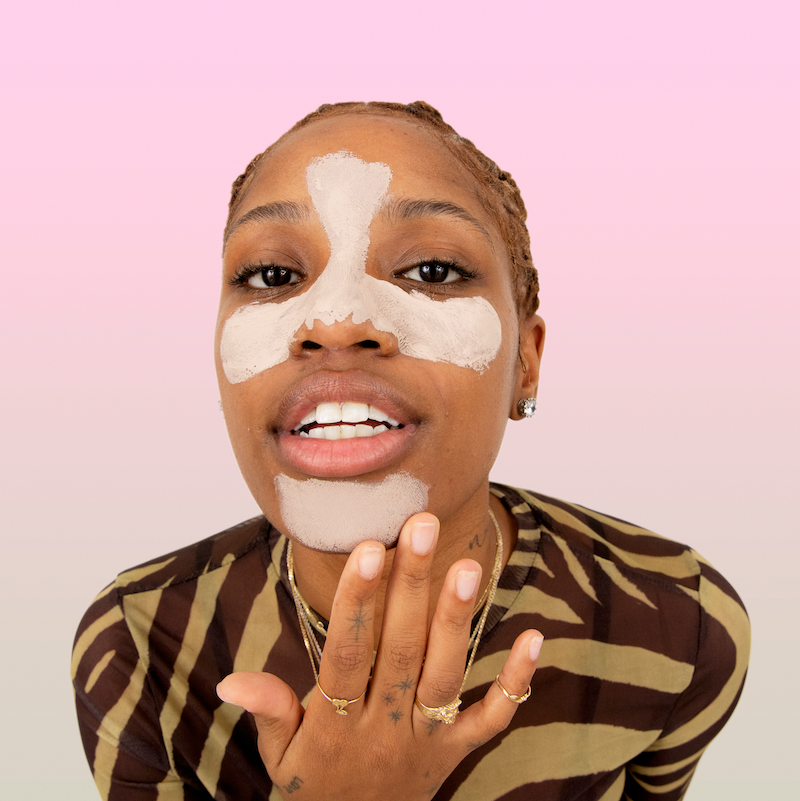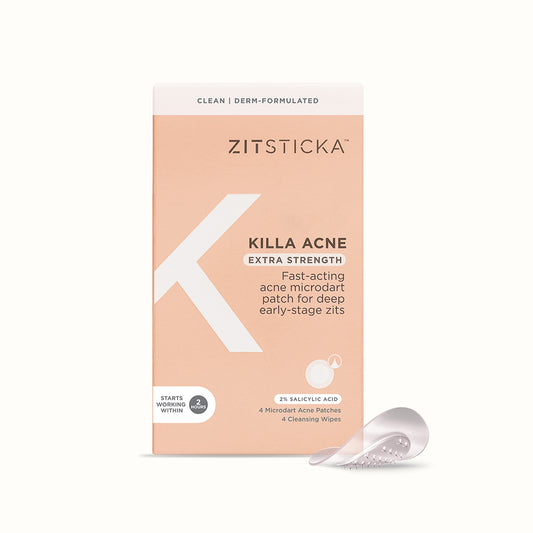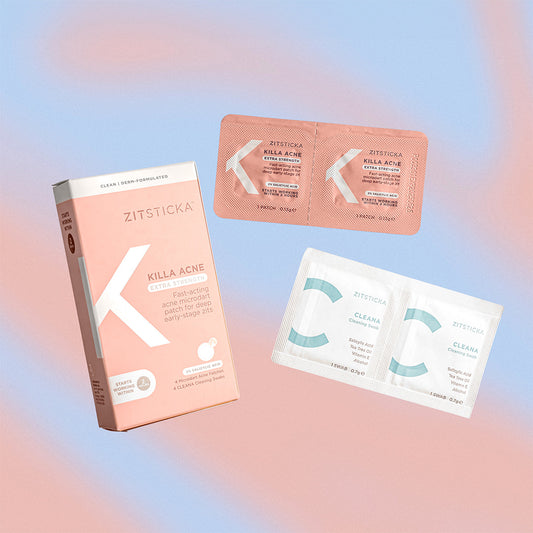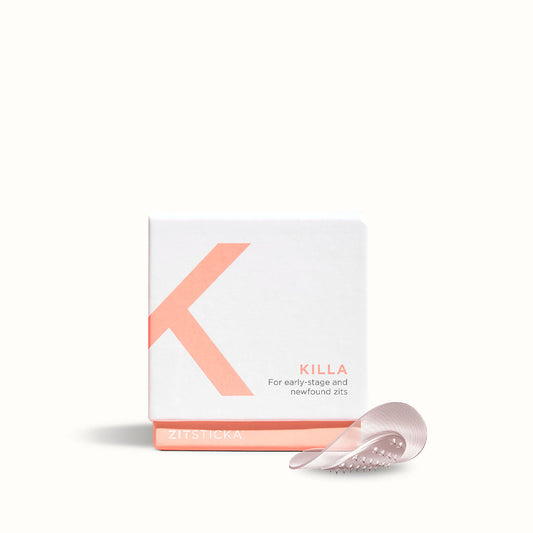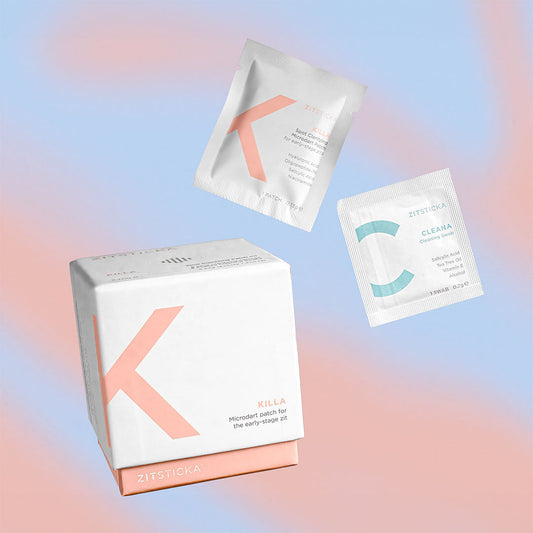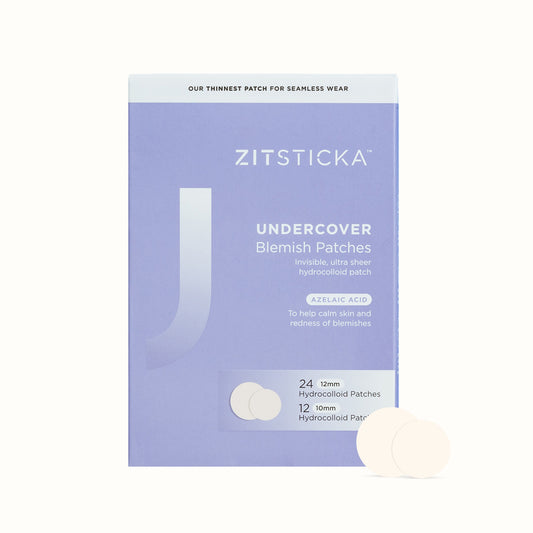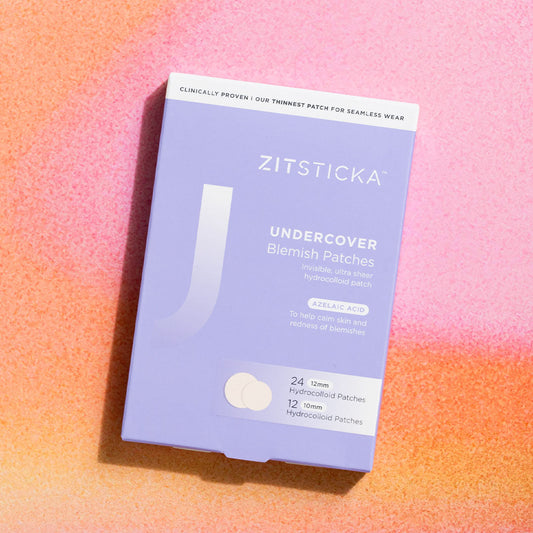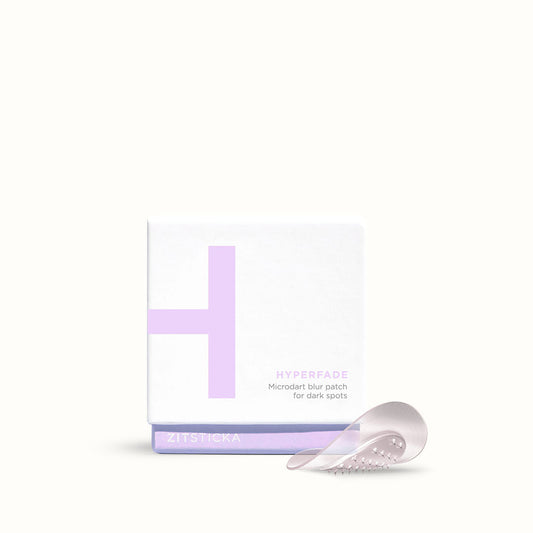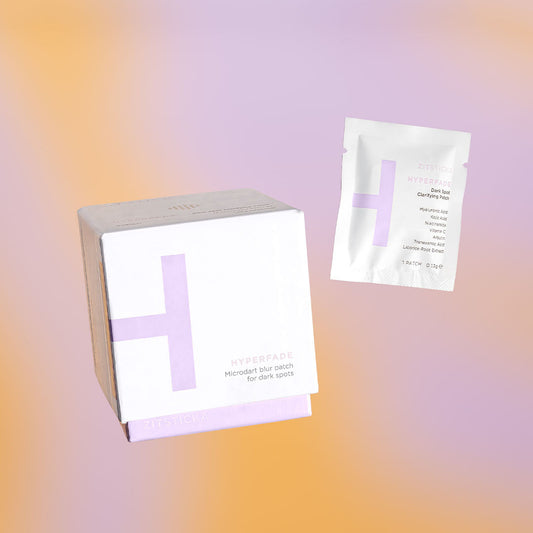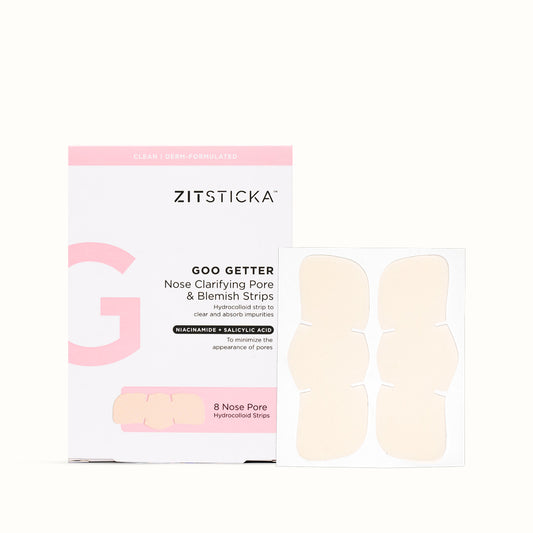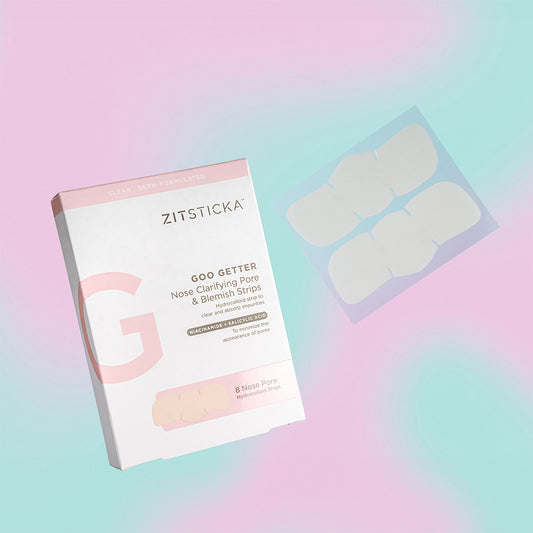By: Lauren White and Jordyn Oakland
Our unrelenting friend, acne, is an inflammatory disease of the oil gland. It can not be ~cured~ but fret not—because it can be very well managed with the right tools. (One such tool is our newly launched multi-masker, PORE VAC.) True acne-prone skin has these three things in common:
- Oil glands producing too much sebum (oil);
- Skin cells turning over too rapidly, resulting in buildup of skin on the surface;
- Lack of adequate hydration in the skin.
Think of our skin like a factory—when things aren't performing as they should, we see *glitches in the system*! In our daily lives, we have triggers that propel our follicles into developing a breakout. These triggers can range from hormones to inflammatory foods, to overuse of products and so much more. Super fun, right?! That's why what works for one person’s acne-prone skin may not work for you, since everyone’s triggers are different.
An acne flare-up is triggered and exacerbated when debris, oil + bacteria become compacted and trapped in the follicle. Hormones are also a huge trigger for many that have acne-prone skin. For example, when oil, dead skin cells, and bacteria clog the follicles, sebum can’t escape the pores, which leads to acne (the gift no-one asked for).
Because acne is a chronic (recurring) inflammatory skin condition, acne-prone skin is more prone to breakouts. It can be genetic, and these folk are more likely to experience inflammation within the follicle. With an acne-prone skin, that person's unique acne triggers then create this ‘domino effect ' with the skin putting stress/trauma on the pilosebaceous unit triggering an inflammatory response. When this inflammation occurs it puts further stress on our skin—pores get clogged and alas, a breakout will occur.
Acne can come in all different forms, and this can be the case-by-case basis for acne-prone individuals too. Come along now as we break down some of the most stubborn skin woes! These are five common skin symptoms that, if experienced regularly, could be signs of having acne-prone skin.
Clogged pores
The pores on your skin can and most likely will become clogged from time to time. Dirt, debris; anything from the big, bad world can get in there to mess up your groove. Clogged pores can give the skin a dull appearance. As we mentioned above—acne-prone skin has expedited cell turnover that creates a buildup of dead skin trapping things beneath the skin.
Blackheads
Blackheads are one of the most common types of acne, and especially frequent on the ol’ schnoz (deeply sorry for saying that). Blackheads form when a clog develops in the opening of a pore. This could be from dead skin cells or oils that collect in the opening to the skin follicle, and exposure to the air causes it to look black (blackheads, get it?). Blackheads often are confused with sebaceous filaments (which are solely compacted oil! TOTALLY NORMAL!) and as much as we want to mess with those, they do not belong to the blackhead family and should really be left the heck alone.
Redness
General redness from breakouts can happen when hormonal fluctuations occur, or simply from stress/trauma to the follicle that triggers an inflammatory response. Your body sends red and white blood cells to fight invaders of your precious epidermis. The result? A painful zit that may be surrounded by redness that’s sensitive to the touch. Ouch.
Active Acne (recurring)
Like we mentioned, there are many reasons why you breakout. Experiencing a single breakout here and there does not mean you absolutely have acneic skin; there are also many ‘acne imposters’ out there, too! Stubborn, always-present breakouts can be referred to as active acne, and it can be extremely frustrating. The active stage is when signs of acne are present by the visible bumps that have fluid or do not. Acne has various grades and two main subtypes: inflammatory or noninflammatory (please do not attempt to extract your inflamed zits!) These commonly form on the forehead, chin, cheeks, and back but may also occur in the ears, chest, virtually any place you have a pore! The bumps can become inflamed, red, and painful. Inflammatory acne is the most severe form, often causing scars as it heals. Depending on the severity, routine care at home is sufficient to reduce breakouts. If the DIY avenues don’t prove fruitful, however, seeking professional help should get you on the right healing and management path.
Excess Oil Production
This can be a definitive skin type, but any skin can fluctuate from dry to oily with acne ebbs and flows. Our skin is a spectrum! All skin needs to maintain a healthy oil balance, though sebum is vital for keeping the skin healthy—too much sebum can lead to oily skin and clogged pores, resulting in breakouts. Oily skin is the result of sebaceous glands making too much oil, and excess oil creates congestion. Excessively oily skin can be characterized as enlarged pores, excessive shine throughout the day and a thicker appearance to the skin.
Larger pores
The size of your pores more often than not falls into the hands of genetics—annoying, we know. Besides genes, the most common causes of large pores are high sebum secretion and decreased skin elasticity. Other factors include chronic acne, hormonal differences, sun damage, smoking, radiodermatitis and vitamin A deficiency.
So, where do we go from here?
If after reading this you’re thinking you may be an acne-prone individual, worry not! There’s great remedies to minimize breakouts and soothe the skin! Between zit patches and skin supplements, an easy (and indulgent!) way to take care of acne-prone skin is regularly using face masks with clean, active and effective ingredients. (We may or may not be working on one?!?!?!?!!)
You’re likely familiar with clay masks; they’re a classic because they work. Clay is one of the oldest known oily skin and acne-fighting ingredients around. There are many types of clay and some versions can excessively dry out your complexion, but our new bb, PORE VAC, uses jojoba to balance the drying effects with nourishing hydration and barrier protection.
Kaolin clay is an example of an ingredient that absorbs excess oil from your skin without drying. Its antibacterial properties means it treats active breakouts, too. Bentonite clay is a detoxifier, absorbing excess oil, reducing, tightening and mattifying the appearance of pores, while calming with anti-redness talents! A mix of both clays is ideal for every skin type from normal to oily, and in combination with gentle acids and hydrating ingredients, your acne-prone skin will be happy in no time.
The bottom line: Acne-prone skin, though frustrating, can be soothed and improved! If you are acne-prone, you are NOT alone. With the right guidance, lifestyle tools and home-care you can very well manage it! Luckily clay is out to play, and on your team for beating breakouts.
Speaking of clay... have you tried PORE VAC? She's packed with bentonite and kaolin, as well as AHAs, BHAs, sulfur and more to unclog pores, refine congested skin and get you glowing.
